The Process is the Practice
Prolific and poetic, experimental and documentary filmmaker, Lynne Sachs, lights up this year’s online edition of Sheffield Doc|Fest with a mini-retrospective, annotated lecture and her new feature, Film About a Father Who (2020).
It happened less than ten years ago, when she was working on Your Day is My Night (2013): Lynne Sachs located the performance within her process and set out to challenge/change it. The idea was to gain participation, collaboration. Instead of turning a camera on her subjects – when they would perform instead of reveal – she decided to include them in the construction and craft of her filmmaking; when you point a camera at a subject, you can’t capture, you command. And power, though useful for its authoritative and therefore convincing tone, is also deeply problematic. In a way, what Sachs is doing is quietly radical. Not just because it is an attempt to remove the hierarchy inherent in documentary since Robert Flaherty started its discourse (Sachs is also a Flaherty Seminar alumnus) but, also, because it is an admission and undermining of her own intrinsic and pervasive authorial voice. It’s ambitious, but that’s also where a kind of freedom resides. The ambition is so substantial that it alone is enough; it doesn’t matter if she succeeds. In this way, Sachs’ later work, from Your Day is My Night onwards, is less about subjects and more about process.
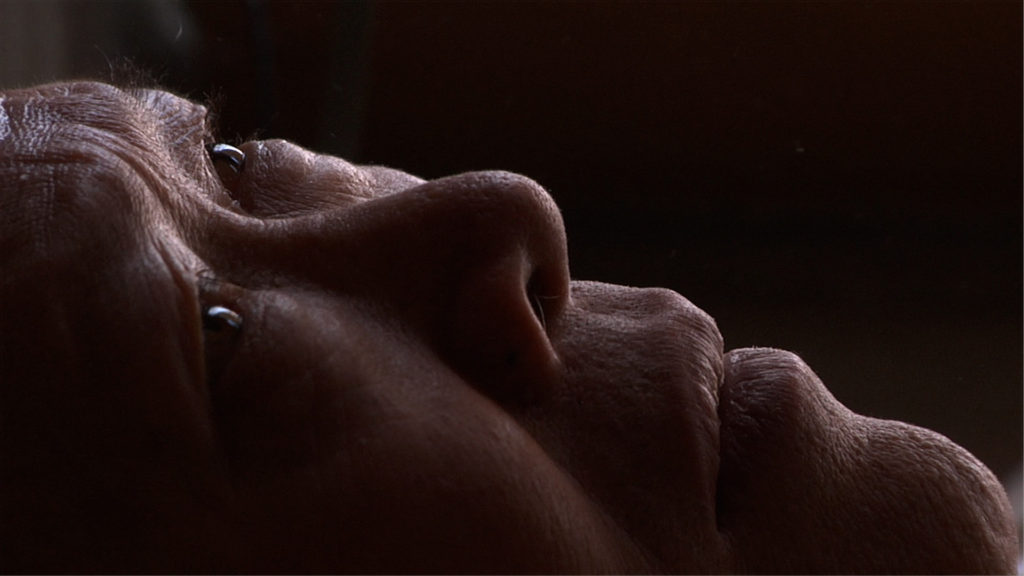
She’s been making films for more than thirty years, but the mini retrospective screening as part of this year’s online edition of Doc/Fest selects moments from the last decade to fit a through-line about Ghosts and Apparitions. I’m not interested in these, as they could be found almost anywhere, and in anyone’s work. In Sachs’ work all I find – and all I want to find – is respectful practice. There is more than just an artist at work, here, there is a generous exploration at play.
Before Sachs experienced her epiphany, she made Which Way is East? (1994), an arresting, painterly exploration of Vietnam. As one of the first American filmmakers granted permission to shoot in Vietnam, Sachs had the weight of responsibility and expectation on her shoulders. Despite this, the film has a sense of lightness and freedom, especially in its aesthetic and aural approach: it begins with a stilted photographic trajectory, literally rendering the moving image as a series of broad brush strokes, while the almost endlessness of the cicadas’ chirrup pitch moves the image along, though not necessarily forward. It is a sensory introduction, rather than a history lesson, and here Sachs’ work is at its most successful, inviting us, as viewers and listeners to be in this depiction of Vietnam, not to look at or hear a presentation of it. Eventually, Sachs and her camera will arrive somewhere static, she will then switch to a show and tell mode, which is informative but less awesome. She flits between the two with relative ease for the remainder of the film, letting her observations and those of her sister, Dana, interpolate the experience. It is as much about making her own memories as it is the chasing of those left behind by others. Her sister’s remarks are among the most revelatory, “I hate the camera,” she muses, “The world feels too wide for the lens and if I try to frame it, I only cut it up.” Holding a camera and being a filmmaker are not one and the same, “Lynne sees it through the eyes of its lens,” she continues, “It’s as if she understands Vietnam better when she looks at it through the lens of her camera.” For Sachs, the practice has always been the pursuit. She instinctively knew, even before it occurred to her laterally, to share the filmmaking in order to make it more accessible, more honest and more like the world it hopes to offer. It may have taken her another almost twenty years to fully understand and break with the idea of documentary as an act or approach, but there is a silver lining of melancholia inside Which Way is East? It makes me wonder if 1) she already knew and 2) if the practice, though expressive and creative as an outlet is also overwhelming, as there is some sadness here.
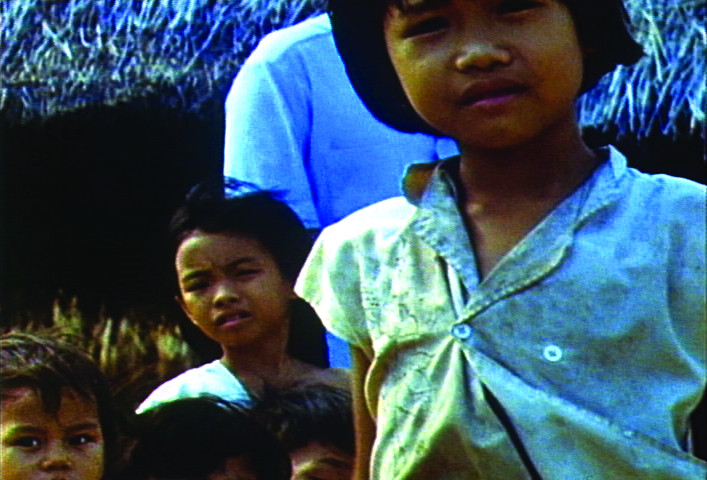
Looking at historical resonance while also pursuing the interplay between the personal and political, Sachs can’t help but put her heart into her films. The Last Happy Day (2009) stars her own children and uses family, performance, narration, interviews and archive to construct a story about stories. For some, it’s a story about Sachs’ relative, Sandor (Alexander) Lenard, a Hungarian Jew who fled to Rome and later Brazil, where he translated Winnie the Pooh into Latin. Lenard spoke thirteen different languages, and no one knew he was Jewish, so the film is also about what we do and do not know, and how we might go about trying to unpick the constructions and obstructions therein. To demonstrate the difficulty to (re)telling history, Sachs has whole through-lines about bones, with several stunning superimposed images that offer the fragments and the palimpsest at once. She even has one interviewee straight up tell us, “I don’t know anymore what’s real and what’s fantasy,” perhaps even a little too direct for a doc, but ironically true nonetheless, “I am not sure of the truth.”
Remembrance is also brought into question via the presence of doctored documents; literal erasure of a name lets us reflect on the ethics and truths that we can never know as so many were removed from our future before they could even make their mark. What struck me most, however, was the role of the central, yet arguably flippant, text. I wonder how the characters are in translation. Sachs’ band of performers – here, her children and their friends – act out scenes and discuss the meaning behind some of the plot points. Inevitably, they end up discussing the death drive when they get to talking about depression and Eeyore. I’ve always hated Winne the Pooh, because I thought he and many of his mates – Tigger, Rabbit, Owl and maybe even Piglet in his cowardice – were bullies, unkind to Eeyore, to whom my heart always went out. If I were Eeyore and had to live in their world, I might also desire death as an end to my depression. Even Christopher Robin didn’t seem to do anything to help, and he was a (white) human, surely the one with all the power. Could be that I remember it wrong, unsure what’s real and what’s fantasy, but in my remembrance, it is a horrible story filled with horrible characters. It’s lack of compassion makes me sad, still.
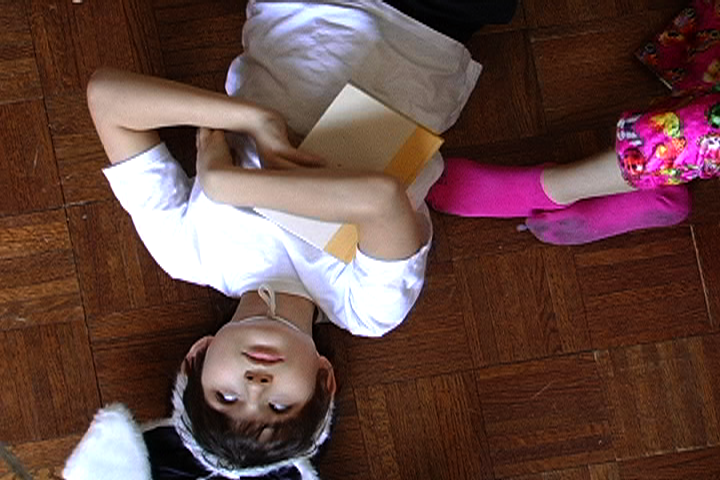
But the film itself failed to move me. It was clever and fits a bunch of paradigms that I’d call smart documentary filmmaking. I even think it’s the most obvious fit for that Ghosts and Apparitions programme title. Perhaps that is why it didn’t move me at all. It’s all a bit too neat, well thought out. Nothing incidental or imperfect. No rough edges. But then I watched The Washing Society (2017, co-directed with Lizzie Olesker) and everything changed.
Thanks to Sachs’ newfound process of inclusive filmmaking, with her subjects, The Washing Society feels like a story from, not about New York City laundromats. Visiting over fifty laundries, Sachs tells us, “Sometimes they told us to stop, other times no one notices.” This is how her filmmaking has fundamentally changed: it’s not a process of requesting permission and setting up a tripod to stage an interview, it’s being in the space, with the people, and finding out what the story is as it unravels. Owing to this shift, the performative set pieces within the film – be it actors reading lines, narrated poetic interventions, or even Sachs’ fascination and lingering look at the way light dances around her subject(s) – are seamlessly integrated into an otherwise seemingly observatory mode. What I liked most was that it felt personal, private, public and political at once; the invisible labour of laundry workers is made visible, while the objects we wear to cover and conceal are laid bare, tossing and turning in machines after their toil, until they are, eventually, ready to perform their duty once more. Clothes are the ultimate in public and private markers; from the hours and loads of labour used to make, market and sell them before they even become hours and loads of labour to clean, fold and return to their often-oblivious wearers. I watched, at home, folding my own laundry, mostly that of my almost one-year-old son, painfully aware as I am that domestic labour (performed here whilst undertaking professional labour) is almost always unseen and almost never remunerated. I loved this film not because it struck a chord, but because it could; its poetry sparing and its humanity, honesty and openness laid out with generosity and as a gesture to the many faces that have served and are fast disappearing from NY’s many regenerated neighbourhoods as an app and its collection truck counterpart take over the (barely) visible nature of the business.
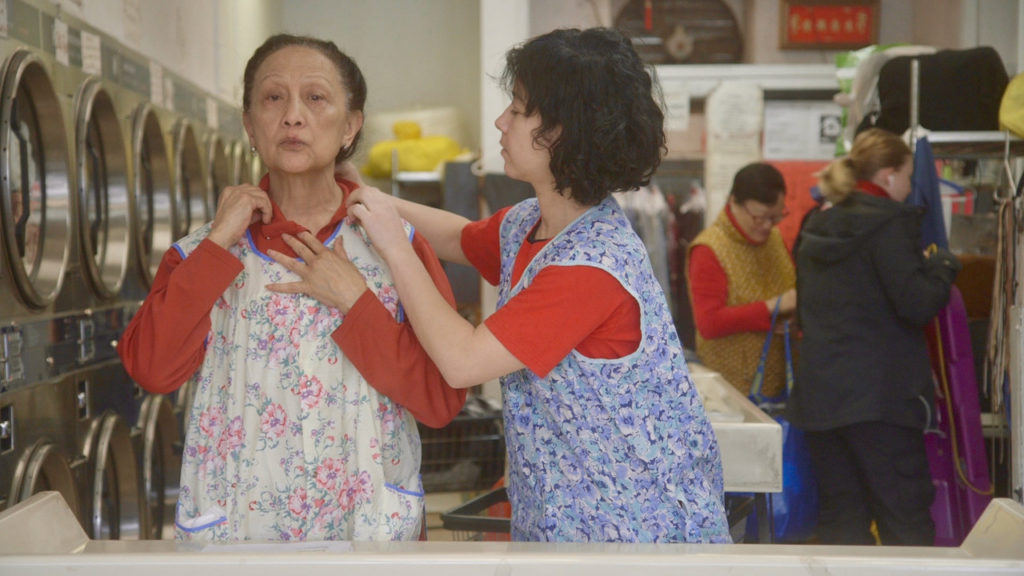
It’s an important reminder, from Sachs, to think about what is not seen, whenever we reflect on what we have seen. Your Day is My Night (2013) is not just a film; it has had live stage performances and it is alive in the lives of those it features. Beds and stages and monologues and movement and projection are all elements of this docu-dramatic staged record of what it means to be more than how we are recognised. Spanning the deep economic issues of the US, and the failed reality of the outwardly boastful American Dream, all the way to micro-communities and what ‘home’ might ever mean, Your Day is My Night doesn’t show but does reveal the alienation inherent in both Chinese and American society. In making this film, and the live performances that span its production life, Sachs really got to know her collaborators – well, as well as she could with the bridge of a translator. Language can be a powerful separator, and Sachs hints at this in the film by bringing in an actress (Veraalba Santa, who also features in The Washing Society) to play the part of a Puerto Rican immigrant. It’s not Sachs, but her questioning and unease is represented in Santa’s performative role.
In her lecture, My Body, Your Body, Our Bodies: Somatic Cinema at Home and in the World, Sachs admits that she is still grappling with the extent to which she should express herself, and the subject. Her body may not be present in this film (it features heavily in many of her earlier, more experimental and material works), but exposing herself has served as a form of generosity, especially where she is asking an actress to expose themselves bare, as in The House of Science: A Museum of False Facts (1991).
Bodies exist but so do thoughts and feelings. And suicide is genuinely considered as an option when old age sets in for those who have no real ‘home’ to go to – neither a citizen of the US or China, there is a unique and pugilistic purgatory for some. Every round is a beating, but fight is what you came to do. I kept thinking of Charles Yu’s fantastic new book, Interior Chinatown (2020) as I watched it. Yu’s book is so many things – maybe everything – a documentary as a book, certainly. A uniquely crafted satire of Hollywood, racism in the United States, and the slippage between screenwriting and prose, Yu’s book looks at the stereotypes of ‘Generic Asian Man’, ‘Background Oriental Male’, ‘Kung Fu Guy’ and more. The people in Sachs’ film feel like characters, at times. Maybe because their lives, like the characters in Yu’s book, are enmeshed with the performance of their parameters – Chinatown in NYC, stuck in a stereotyped nightmare, “I was very aware of the narrow spectrum of representation of the denizens of New York City’s Chinatown,” Sachs tells Paolo Javier in an interview for BOMB Magazine, “Those kinds of Hollywood images haunted me really. In fact, when I first chose the seven people who are featured in my film, I realized that most of them had already worked as extras for the movie industry at some point in their lives.” Fictions and realities reside, side by side, sometimes even in the same bed, sleeping in shifts.
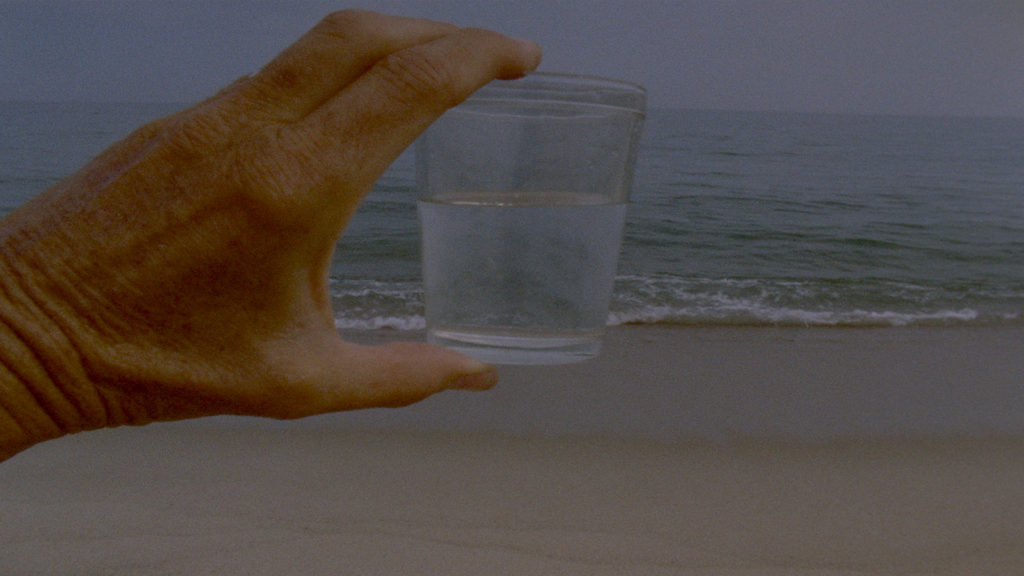
Sachs can’t, shouldn’t and thankfully doesn’t separate these two elements in her films. She works with them. And, now, in her more recent work, she allows the process to become the practice. In her most recent film screening in the programme focus at Doc|Fest, A Month of Single Frames (2019), a work pulling together various pieces of Barbara Hammer’s personal archive – 16mm film footage, journal entries and recorded stories – Sachs lets decisions leak into the final edit, allows us to understand how images move as time lapses. For Hammer as for Sachs as for an audience, frame rates and time passing is only relevant insofar as it is a part of the process that makes up such a thing as a filmmaking practice. It is not important when it occurs, only that it does. In that way, the film is not an archive or an object to be examined or understood. It is the act of holding those things, that person, their feelings, their being.
In this way, Film About a Father Who (2020) is her greatest achievement yet. Digging into far more than the family archive, Sachs takes footage and feelings that span her entire life to create a portrait, not of her father, but of “complicit ignorance” and how pervasive lies of omission might permeate both films and lives, through their intrinsic and insidious power dynamic. Her father is many things, among them a philanderer. Much was uncovered, but he withheld more. This is the role of structure and authority, the act of patriarchy and the act of whomsoever holds power. In this film, it is clear that her father is not the only one with power to play with – his mother, Maw-Maw, is just as commanding, especially as the puller of purse-strings, whose judgement has the ability to grant or take away knowledge, access, identity; family, truth and more. This is what Sachs has been working on all her life because it is the process of uncovering her power and confronting herself. Her aim to frame truth and authenticity will always be compromised by the reality of the moment that the camera is turned on, be it for family or strangers. In Film About a Father Who, Sachs admits that she is filming as a way of finding transparency. It is the ultimate in searching for cinematic veracity. She finds something beautiful and deeply moving, here. Speaking about the differences between her parents, she uses grammar as a metaphor. By extension, her own practice can be understood as a process of grammatic excellence; each thought, memory, scene, time and space given pause and punctuated by still more dancing light.
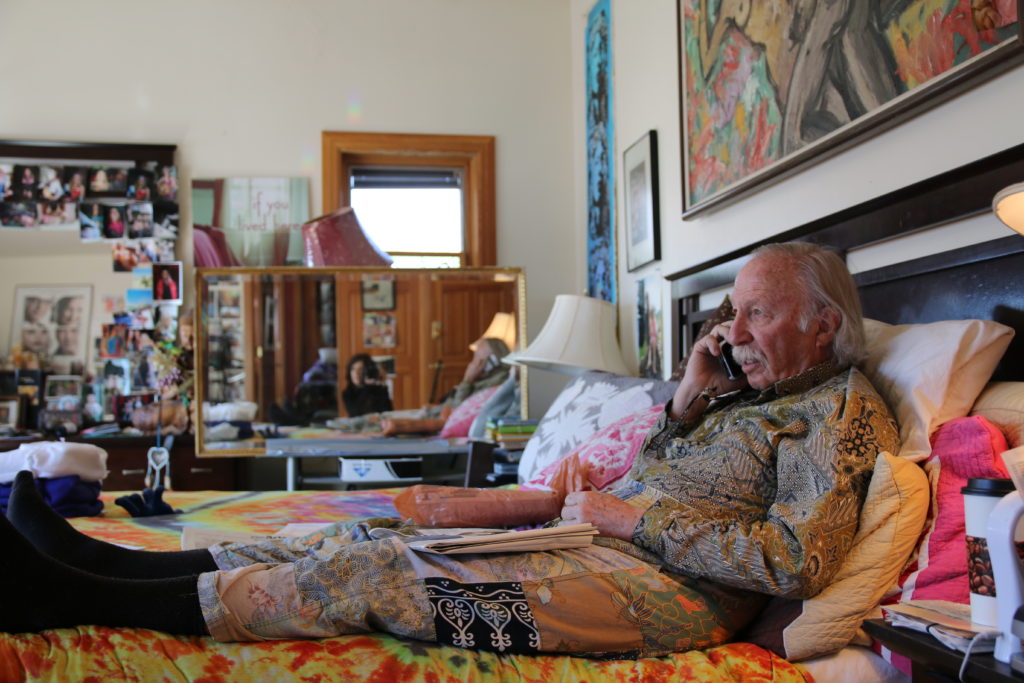
Reflecting on the impact of experimental filmmaker Stan Brakhage and his ground-breaking film Window Water Baby Moving (1959), Sachs understands her practice as the unification of art and life, “As a mom and an artist, I was extremely inspired by the way that he integrated his family into his daily practice as an artist. If you separate the two, both suffer.” On her own website, she further imagines “a list of possible lectures one might give in conjunction with the screening of this film [Window Water Baby Moving]. I offer them to you as a vehicle by which to ponder the last forty years of American cultural history.” There are twenty-three. I won’t list them, here. But they did get me thinking about possible lectures one might give in conjunction with the screenings of Sachs’ films. Here’s five of my suggestions.
Confronting Performativity
In Defense of Poetry
The Collaborative Moment
Towards an Understanding of Dancing Light
The Camera as Pencil; Drawing in the Margins

















2024-01-10 @ 07:58
What a great piece! You have a real talent for making complex subjects accessible and interesting.